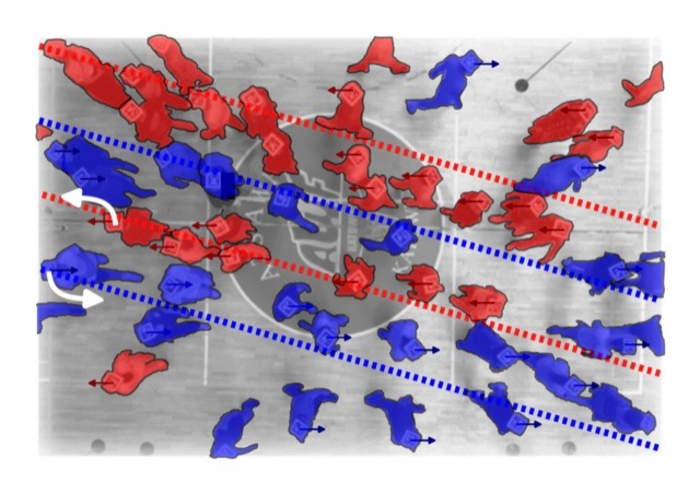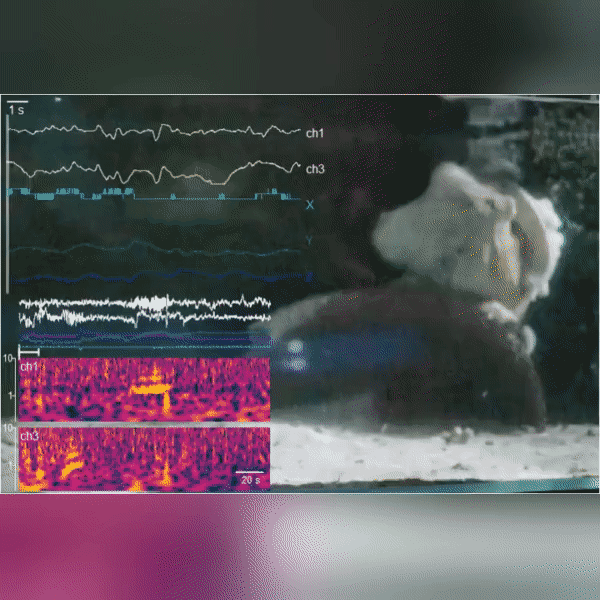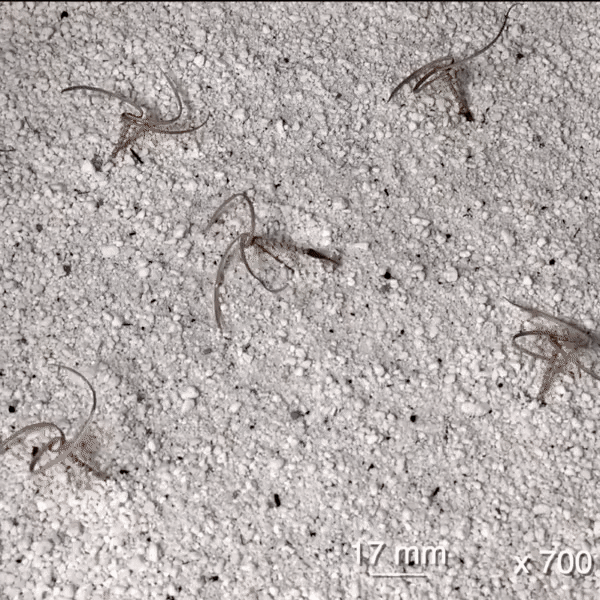From University of Bath, 08/03/23
Have you ever wondered how pedestrians ‘know’ to fall into lanes when they are moving through a crowd, without the matter being discussed or even given conscious thought?
A new theory developed by mathematicians at the University of Bath in the UK led by Professor Tim Rogers explains this phenomenon, and is able to predict when lanes will be curved as well as straight.
The theory can even describe the tilt of a wonky lane when people are in the habit of passing on one side rather than the other (for instance, in a situation where they are often reminded to ‘pass on the right’).
This mathematical analysis unifies conflicting viewpoints on the origin of lane formation, and it reveals a new class of structures that in daily life may go unnoticed.

The discovery, reported this week (Friday, March 3) in the prestigious journal Science, constitutes a major advance in the interdisciplinary science of ‘active matter’ – the study of group behaviours in interacting populations ranging in scale from bacteria to herds of animals.
Tested in arenas
To test their theory, the researchers asked a group of volunteers to walk across an experimental arena that mimicked different layouts, with changes to entrance and exit gates.
One arena was set up in the style of King’s Cross Station in London.
When the researchers looked at the video footage from the experiment, they observed mathematical patterns taking shape in real life.
Professor Rogers said: “At a glance, a crowd of pedestrians attempting to pass through two gates might seem disorderly but when you look more closely, you see the hidden structure.
Depending on the layout of the space, you may observe either the classic straight lanes or more complex curved patterns such as ellipses, parabolas, and hyperbolas”.

Lane formation
The single-file processions formed at busy zebra crossings are only one example of lane formation, and this study is likely to have implications for a range of scientific disciplines, particularly in the fields of physics and biology.
Similar structures can also be formed by inanimate molecules, such as charged particles or organelles in a cell.
Until now, scientists have given several different explanations for why human crowds and other active systems naturally self-organise into lanes, but none of these theories have been verified.
The Bath team used a new analytical approach, inspired by Albert Einstein’s theory of Brownian motion, which makes predictions that can be tested.
Encouraged by the way their theory agreed with the numerical simulations of colliding particles, they then teamed up with Professor Bogdan Bacik – an experimentalist from the Academy of Physical Education in Katowice, Poland – and ran a series of experiments (such as the one modelled on King’s Cross) using human crowds.
Lead author Dr Karol Bacik said: “Lane formation doesn’t require conscious thought – the participants of the experiment were not aware that they had arranged themselves into well-defined mathematical curves.
“The order emerges spontaneously when two groups with different objectives cross paths in a crowded space and try to avoid crashing into each other.
The cumulative effect of lots of individual decisions inadvertently results in lanes forming.”
The researchers also tested the effects of externally imposed traffic rules – namely, they instructed the participants to pass others on the right. In agreement with the theoretical prediction, adding this rule changed the lane structure.
“When pedestrians have a preference for right turns, the lanes end up tilting and this introduces frustration that slows people down,” said Dr Bacik.
“What we’ve developed is a neat mathematical theory that forecasts the propensity for lane formation in any given system,” said Professor Rogers, adding: “We now know that much more structure exists than previously thought.”
Links
https://www.science.org/doi/10.1126/science.add8091




Your article helped me a lot, is there any more related content? Thanks!